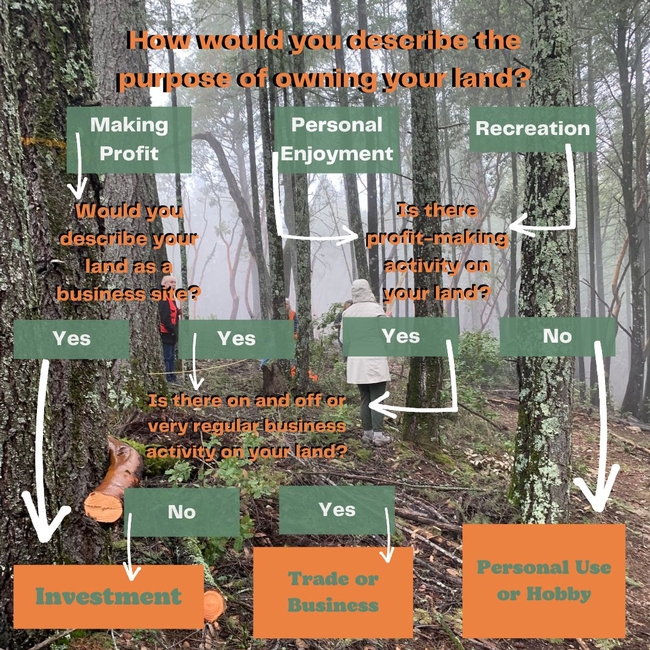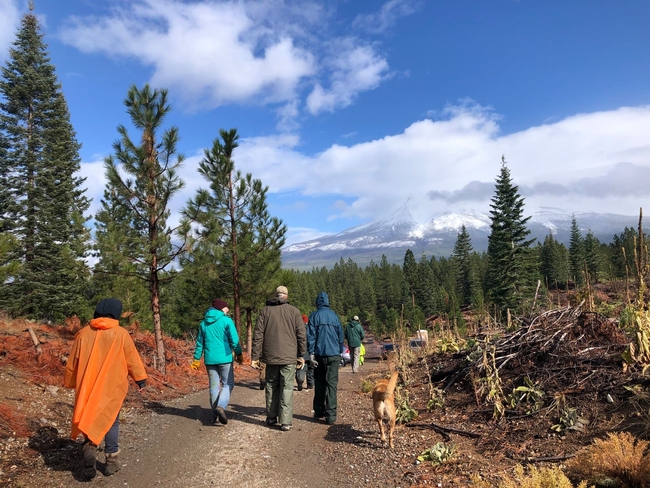April showers bring May flowers…along with the less colorful tax season. When you're a forest landowner, filing taxes is more complicated than it would be when only reporting one's wages. But don't let that intimidate you. For both new and experienced landowners, an excellent introduction to forestland income taxation is the Federal Owner's Guide to the Federal Income Tax, Agricultural Handbook No. 731, available here. In addition, here is a compilation of the top tax tips that you should keep in mind, pulled from the USDA Forest Service's “Tax Tips for Forest Landowners: 2022 Tax Year”. Read the full guide here. Another important resource is the National Timber Tax website, which you can find here.
Remember, keeping detailed records and understanding the implications of activities on your land is instrumental when preparing for the current and subsequent tax reporting years. Always consult your tax advisor before filing, as the following tips are intended to serve as an educational resource.
Tax classification? Needs some translation.
Asking yourself: “What is the purpose of owning this land?” and beginning to think of your land as more than a recreation site may be strange. However, if you are producing periodic income, your forestland could be classified as an investment or business for income tax purposes. Characterizing the reasons for owning your land is the first step towards ensuring that you are utilizing the correct filing provisions of the Internal Revenue Code (IRC) and qualified deductions. If you haven't already done so, below is a flow chart that can help you start determining whether your land is characterized as an investment, business, or personal use property.
When figuring out which taxation rates and deductions apply to an investment or business property, you must first determine the correct cost allocation for any assets (e.g land, timber, improvements). This process can be complicated, and we recommend both starting early, and consulting your forester and/or tax advisor to guide you through the process.
Once you have characterized the reasons for owning forest land, it becomes easier to understand the rest of the tax jargon and which incentives you may qualify for. Here we will expand upon various incentives and deductions that many forest landowners could qualify for, whether they consider themselves a business or an investment.
Tax expert tip: The basis for a particular asset or asset class changes over time due the events such as depreciation, reforestation, casualty losses, and periodic timber sales. The changes are described as adjusted basis. Consult with your tax advisor regarding adjustments to basis.
Are you a participant in a cost sharing program?
Congress granted landowners who participate in certain conservation-based cost-share programs the ability to exclude income received from that program (reference IRC Section §126(a)). Some commonly known eligible programs are recognizable (EQIP, CFIP, and FHHP), but determining the eligibility of some other federal and state-based programs may be more difficult.
The USDA recommends contacting the respective administrator for the program(s) you may have participated in to check its applicability for this exclusion. You can also use this handy calculator provided by the TimberTax.org website to get an idea of what portion of income may be excluded.
Tax expert tip: For cost share programs requiring owner participation, it may be wise to include the government payments and deduct the entire costs, thus showing a loss to the business or investment.
Other tax incentives and deductions for Investment or Business Property
Have you paid for precommercial thinning or control of competing vegetation? If you are involved in those and other day-to-day forest management activities on your land, you may be considered a material participant. This opens the door to deduct many expenses considered necessary for business operations. However, only land characterized as an investment or trade/business is eligible for these deductions, which are explained in greater detail below.
Tax expert tip:IRC § 469 provides a series of tests for material participation. If you cannot meet the criteria of these tests, the deductibility of some types of expenses may have to be deferred to subsequent years.
- Reforestation: Expenses such as site prep, seeds/seedlings, labor (not personal), tools, etc. may be eligible for a tax deduction of up to $10,000 with additional expenses amortized over 7 years. Make sure that your land is a QTP (qualified timber property)- this means that your land is involved in the commercial production of timber products under IRC § 194.
- Casualty loss: If your land has suffered timber loss due to a wildfire, flooding, or other natural disaster, the casualty may qualify for a tax deduction under IRC §165. Here is a 2021 UCCE blog that covers casualty losses in greater depth.
- Capital costs: Bridges, fences, culverts, and other land improvements as well as major pieces of equipment, e.g. trucks, tractors etc. are all considered depreciable assets.
- Precommercial thinning or control of competing vegetation is generally treated as a deductible expense in the year that the expense is incurred.
Tax expert tip: Under current law, casualty losses are very limited for forest land characterized as personal property. Forestland characterized as investment or business property losses are limited to the lower of the property's adjusted timber basis or the change in FMV (fair market value) to determine the size of their deduction.
Regarding income for timber sales:
While net income from timber sales is considered taxable income, the type of income and tax rates may be significantly different. For timber that has been owned for a year or more, the net income from a sale may be treated as a long-term capital gain. The consequence is a much lower marginal tax rate than ordinary income. The taxation of timber is governed generally under provisions of IRC 631(a) [ trees manufactured into logs and delivered to a sawmill], or §631(b) [standing trees (Stumpage) sold to a sawmill who is responsible for cutting and removing the designated trees to their mill], and IRC §1231 [capital assets].
There are significant differences in how the capital gain is calculated under IRC §§ 631(a) and 631(b) that are beyond the scope of this blog. However, the Federal Owner's Guide to the Federal Income Tax, has a good discussion of this procedure with examples.
Treating your forest land as a business or investment is an important step forward in efficiently managing your forest which can lead to many incentives and deductions that will legally reduce your income tax burden. The resources discussed above are important to keep in your landowner toolkit and can help you approach this and following tax years with more knowledge.


